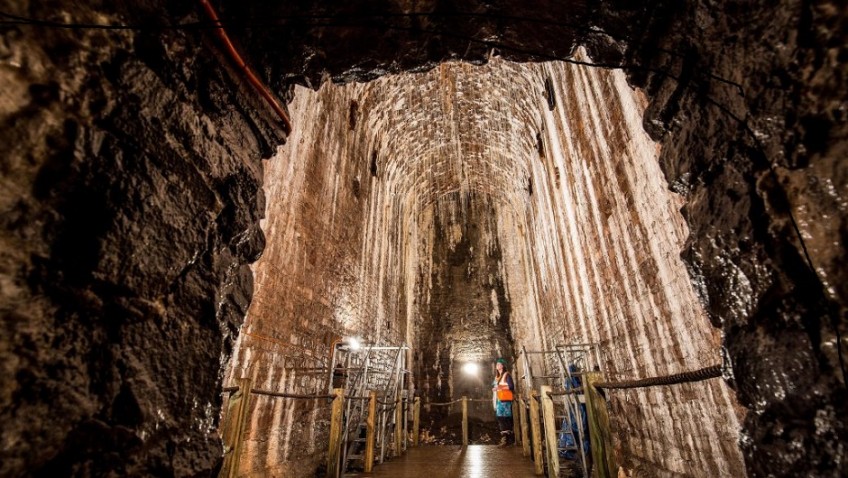Hidden for more than 150 years – these are the stunning cathedral-like vaults under Isambard Kingdom Brunel’s engineering masterpiece.
The 12 chambers below each end of the famous Clifton Suspension Bridge were first found by chance in 2002 by a builder.
They have now been opened to the public for the first time since the bridge opened in 1864 after doorways were installed in the two-metre thick brickwork.
The vaults are inside the massive two-storey abutments which support the bridge towers either side of the Avon Gorge in Bristol.
It was assumed for decades that they were either solid stone or filled and the discovery of the huge chambers surprised historians.
Two of them have now been opened for guided tours where visitors will have to climb down a ladder and squeeze through a small passageway.
The sealed-up chambers were discovered by chance by a builder as he replaced paving stones on the western side of the bridge nearly 15 years ago.
Since then all of the rubble in the lower chamber of the abutment has been “hoovered” out using a section truck and the site made safe.
Laura Hilton, the bridge‘s visitor services manager, said: “Brunel made sure it would last but he didn’t consider that people would have to go into the vaults to perform any kind of maintenance, so there was no entranceway to them at all.”
Built using lime mortar, the vaulted chambers are filled with stalagmites and stalactites – calcite deposits dripped down through the brickwork
No construction drawings survive and as the vaults were sealed, no-one knew of their existence.
Connected by a network of narrow tunnels, Ms Hilton said the massive two-storey abutment was “quite a strange place to go inside”.
She added: “The largest chamber that we can go into is tall enough to stack three double-decker buses inside.
“It’s almost like a cathedral and because it was built using lime mortar it’s filled with stalagmites and stalactites so it’s just amazing to go inside.”
The bridge, which stands 245ft above the high water mark, was completed in 1864 – five years after Brunel’s death at the age of 53.




